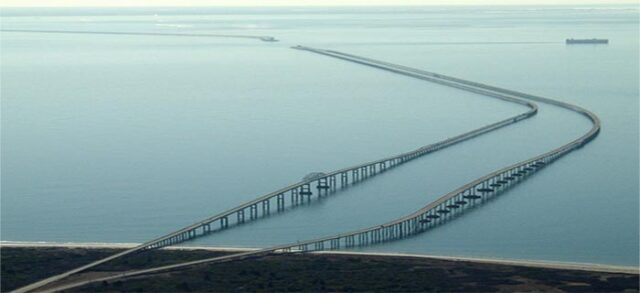
Crossing the Chesapeake Bay is something that many people have to do every day.





The main route across is the massive Chesapeake Bay Bridge. This is no normal bridge. The Chesapeake Bay Bridge can rise to more than 200 feet above the water.
It is over four miles long. The railings along the sides of the bridge are very low making it feel as if there is nothing between the drivers and a steep drop to the water below. The weather on the bridge can change at any minute from sun to torrential downpours.
The Chesapeake Bay Bridge has become a major source of anxiety and stress for many drivers. Some people are so terrified of the bridge that it has become impossible for them to drive across it. “I suffered a major panic attack”Carolyn Casey said when talking about crossing the bridge.
This is where Alex Robinson can help. He started a company call Bay Bridge Drive-Overs that specializes in taking people across the bay.
Alex will drive someone in his or her own car across the bridge for a fee of $25. Alex does not have anxiety or a fear of the bridge although he does know that it is a dangerous crossing. Business for Alex is booming. He has driven thousands of people across the Chesapeake Bay Bridge since first opening his business.
Alex likes to think that his driving is acting as a type of therapy for his clients that will eventually allow them to overcome the fear of the bridge.
Suspension bridges are a type of bridge in which the deck (the part that vehicles and pedestrians walk on) is suspended from cables attached to two or more towers. This type of bridge is often used to cross large gaps, such as rivers or canyons.
The first suspension bridge was built in the early 1800s by Charles Labelye. The bridge, which crossed the Niagara Falls, was made of iron chains and ropes. Today, there are many different types of suspension bridges, including cable-stayed bridges, which have cables connected to their towers and anchorages.
Did You Know? The world’s longest suspension bridge, at 4,000 feet (1,200 meters), is the Akashi Kaikyo Bridge in Japan — which means “the bright polestar.” [Source: Encyclopedia Britannica]
Suspension bridges are often used to cross large gaps, such as rivers or canyons.
The first suspension bridge was built in the early 1800s by Charles Labelye. The bridge, which crossed the Niagara Falls, was made of iron chains and ropes. Today, there are many different types of suspension bridges, including cable-stayed bridges, which have cables connected to their towers and anchorages.





Did You Know? The world’s longest suspension bridge, at 4,000 feet (1,200 meters), is the Akashi Kaikyo Bridge in Japan — which means “the bright polestar.” [Source: Encyclopedia Britannica]
Some suspension bridges need to be able to hold heavy loads such as cars and trains. Others only need to support light loadings such as pedestrians and bicycles.
Suspension bridges can often turn out to be dangerous during high winds because the deck may move up and down or side-to-side. The bridge may also vibrate and bounce, which can be very dangerous for drivers and pedestrians. Engineers have to take these factors into consideration when designing suspension bridges.
Despite the dangers, suspension bridges are a popular choice for crossing large gaps because of their elegant design and their ability to span long distances. They continue to be an important part of our transportation infrastructure.





